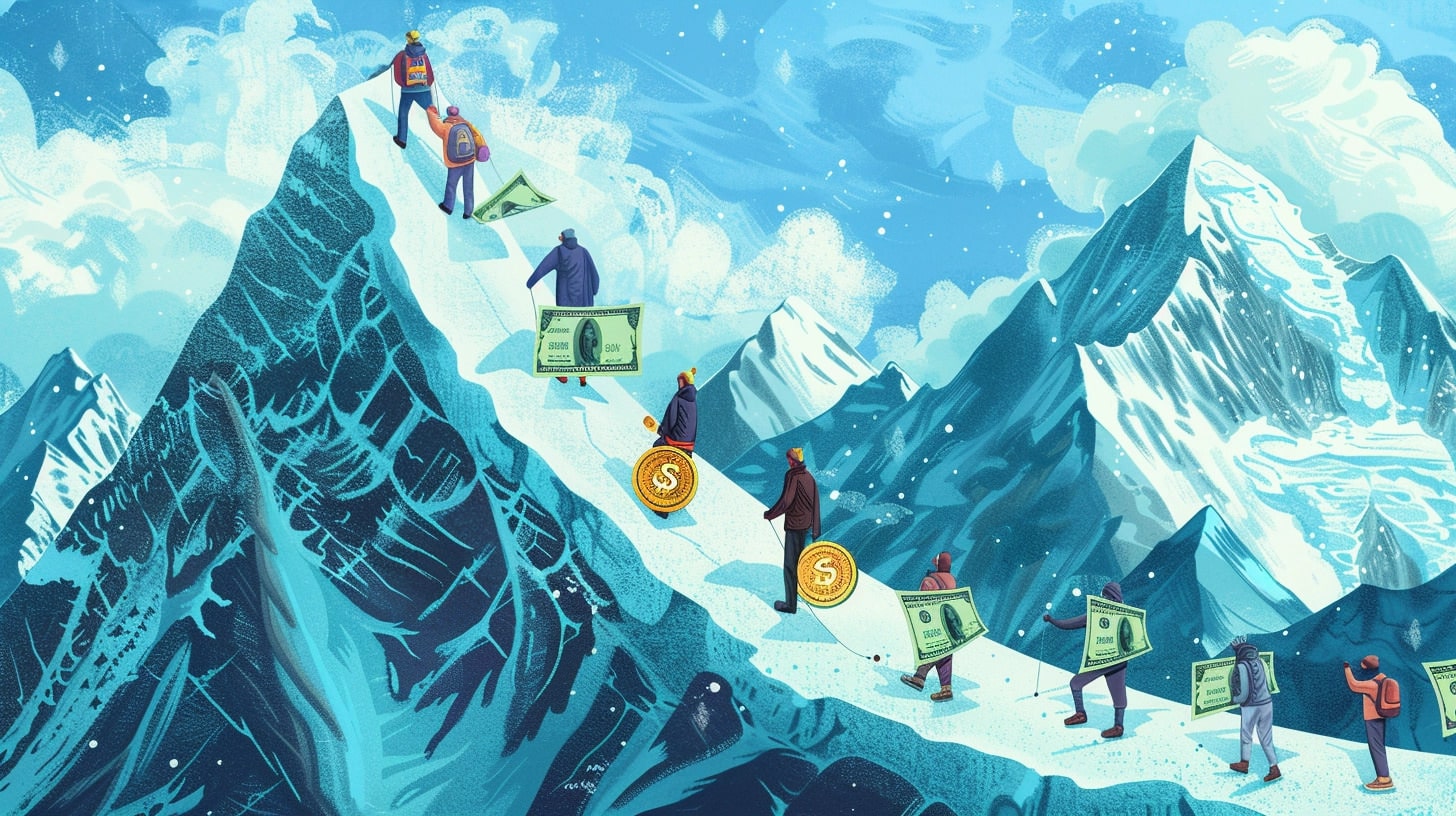Bundling offers is my secret weapon for boosting revenue.
When you bundle to boost your revenue, it's like putting together a winning team, combining products or services into a package, and selling at a discounted rate. It works wonders—think Microsoft's Office Suite or Adobe Creative. It’s simpler for me to select a bundle that is relevant to me (for example, creative, business, finance, etc.) and as a bonus, I’m often delighted to discover a new software I didn’t know I needed that was included in the bundle.
Bundling not only ramps up sales volume, but also strengthens customer relationships and elevates the brand's value. The idea is to offer more for less, creating a high perceived value. Employing high-quality marketing along with competitive pricing can really make your bundles shine.
Want to learn the nitty-gritty about perfecting your bundling strategy? Stick around and let's unfold the magic together.

Key Takeaways to Boost Your Revenue
- Implementing a product bundling strategy can significantly boost revenue by increasing sales volume.
- Offering bundles at a lower price than individual items can enhance the perceived value, encouraging purchases.
- Strategic pricing and effective marketing tactics are crucial for a successful bundling strategy.
- Clear communication of the bundle's value proposition can influence consumer behavior and increase sales.
- Successful bundling examples include Microsoft's Office Suite and McDonald's ‘Extra Value Meals', which increased sales and customer loyalty.
Understanding the Concept of Bundling
Let's explore the concept of bundling – a strategic marketing approach that can significantly enhance your profit and client relationships. Fundamentally, this involves combining products or services into a package and selling them at a discounted rate. Bundling is a smart pricing strategy that enhances the perceived value proposition. Customers feel they're getting more for their money, which aids in customer retention.
Implementing this strategy requires careful consideration of your offerings and your market:
- What combination of products or services will appeal most to your customers?
- Can you upsell by offering premium bundles?
These are important questions.
Marketing tactics play a significant role in promoting your bundles. Highlight the value clients will gain from the bundle, emphasizing the savings and convenience. Remember, your aim is to create an irresistible offer that customers can't resist.
Incorporating this strategy can seem challenging, but it's worth the effort. Bundling not only encourages customers to buy more at once, it also cultivates a sense of loyalty, as customers appreciate the added value they receive. Done right, bundling can be a powerful tool in your business arsenal to boost your revenue.
Benefits of Product Bundling Strategy
Exploring the benefits of a product bundling strategy, we quickly uncover its potential to greatly boost your revenue, strengthen customer relationships, and enhance your brand's value proposition. By employing clever pricing strategies, you can offer customers more for their money, encouraging them to buy more products at once. This not only increases your sales volume but also impacts consumer behavior, making customers more likely to return.
The strategy plays on customer loyalty, giving them a reason to choose your bundles over single products. It creates a perception of value that's hard to resist. When customers perceive that they're getting a bargain, it strengthens their relationship with your brand, enhancing loyalty.
Moreover, product bundling is a powerful marketing tactic. It helps your brand stand out in a crowded market by offering a unique value proposition that competitors may not have. It's a way to differentiate your brand and position it as a provider of value.
How to Implement Effective Bundling
Having understood the significant benefits of a product bundling strategy, it's now time to focus on how to effectively implement this approach in your business.
First, essential pricing strategies are important. Offer bundles at a price lower than the total cost of individual items to maximize customer perceived value. This could lead to greater customer retention as customers see the savings and convenience you're offering.
Next, effective marketing tactics should be employed to highlight your value proposition. Show customers the benefits they can enjoy when they buy your bundle. This could be price savings, complementary products, or exclusive items only available in the bundle. Use visuals, customer testimonials, and clear, persuasive language to sell your bundle.
Addressing Challenges in Product Bundling
While bundling can greatly enhance your business's revenue, it's important to tackle the potential challenges that might arise, guaranteeing a smooth, profitable strategy. One of the key challenges I've encountered is developing effective pricing strategies. Bundling offers value, but mispricing can damage both your revenue and customer retention. It's essential to understand your customers' perceived value and align your pricing accordingly.
Marketing tactics also play a significant role in successful bundling. You must clearly communicate the value proposition of your bundle to your customers. That's where consumer psychology comes into play. Understanding what motivates your customers to buy, their pain points, and how they perceive value, can help you create bundles that are irresistible.
But let's not forget the hurdle of customer retention. It's often easier to sell a bundle to an existing customer than to attract a new one. That's why it's important to ensure your bundled products are of high quality and truly meet your customers' needs.
Addressing these challenges might seem challenging, but with a thoughtful approach, you can turn these potential obstacles into opportunities for growth. So, bundle up and boost your revenue!
Case Studies: Successful Product Bundling
Now that we've tackled the potential challenges in product bundling, let's shift our focus to some real-world examples of businesses that have successfully used this strategy to skyrocket their revenues.
Take Microsoft, for instance. They've leveraged bundling in their Office Suite, a move that has not only increased sales but also fostered customer loyalty. By offering Word, Excel, PowerPoint, and more in one package, they've created a value proposition that's hard to resist.
Similarly, McDonald's ‘Extra Value Meals‘ are classic examples of successful product bundling. This pricing strategy of offering a burger, fries, and a drink at a lower combined price has proven to be a winner, driving up sales and customer satisfaction.
But it's not just about pricing. It's also about the marketing tactics. Take a look at Sephora‘s holiday gift sets. By bundling products that complement each other, they've created a sense of added value and exclusivity, enticing customers to spend more.
In each of these cases, product bundling has proven to be a strategic move, resulting in increased sales, improved customer loyalty, and a stronger value proposition. It's proof that with the right approach, product bundling can indeed boost your revenue.
Frequently Asked Questions
How Can I Effectively Communicate the Value of My Bundle Deals to My Clients?
To communicate the value of my bundle deals, I highlight bundle benefits and the value proposition. I explain how clients get more for their money, boosting their satisfaction. I use persuasive language and appealing visuals in my bundle promotions, emphasizing the added value. If they're still unsure, I remind them of the convenience and exclusive extras included. Demonstrating value effectively is key to client persuasion, and I'm confident in the quality and worth of my offerings.
What Are Some Creative Ideas for Add-Ons or Bonuses I Could Include in My Package Deals?
I'd recommend a few creative ideas. Try offering seasonal bundles that adapt to customer needs throughout the year. Cross-selling strategies are effective too, like suggesting complementary products. Personalized packages tailored to individual client preferences can also be a hit. Consider exclusive add-ons or niche-specific bonuses that aren't available separately. The key is to provide unique, valuable extras that enhance the main product or service.
How Can I Determine the Optimal Pricing for My Bundle Deals Without Undermining My Profit Margins?
Determining ideal pricing for bundle deals involves a few strategies. I'd suggest a profit analysis first to make sure your margins aren't undermined. Consider customer perception – what's the maximum they'd be willing to pay? Look at your bundle variations, maybe some should be priced differently. Finally, don't forget competitive pricing. Peek at your competition's rates. It's a delicate balance, but once struck, your revenue will thank you!
How Can I Adjust My Marketing Efforts if My Bundle Deals Are Not Selling as Expected?
If my bundle deals aren't selling, I'll first analyze customer behavior to understand their needs better. I'll then revisit my discounting strategies and adjust them if necessary. I'll also explore more effective promotion channels to reach my target audience. Dealing with competition is essential, and I'll guarantee my deals are competitive. Finally, I won't forget the significance of inventory management to prevent stockouts and overstocks.
Can You Provide Examples of Businesses Outside of My Industry That Have Found Success With Product Bundling?
Sure, I can provide examples of businesses from different industries that have successfully used product bundling. Take Apple, for instance, with their iPhone and AirPods bundle. Fast-food chains like McDonald's have also seen success with meal combos. And then there's Adobe, offering software suites. These unconventional bundling examples show how cross-industry bundling strategies can have a positive impact, highlighting the benefits of bundling in boosting revenue, customer value, and brand loyalty.
Conclusion
So, there you have it! Bundling isn't just a smart move, it's a game changer. It brings more value to your customers, strengthens your relationships with them, and skyrockets your revenue. But remember, effective bundling takes strategy and finesse. So, keep your customers' needs at heart, make your bundles irresistible, and tackle any challenges head-on.
Ready to bundle up and boost your revenue? Trust me, it's worth the effort!

